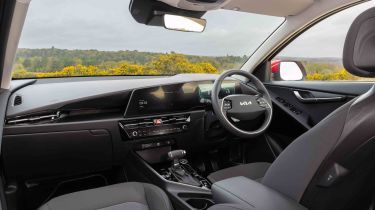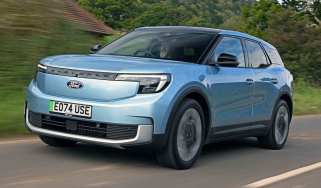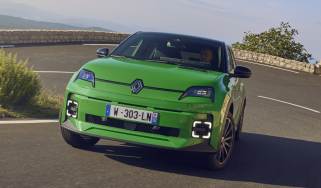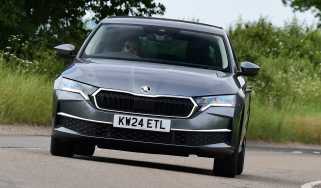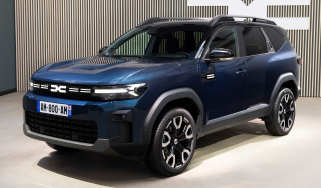Kia Niro - Interior, design and technology
While on-board technology has improved, the Niro's cabin quality isn't class leading

Kia’s bold new design language has transformed the Niro from a rather bland, innocuous SUV into one of the best looking family cars you can buy right now.
The second-generation Niro has a cleaner look to the front end with a set of distinctive angular LED daytime running lights paired with a thin chrome strip above the slim grille. Meanwhile, the Niro’s rear end is more squared-off and features boomerang-style vertical headlights.
The C-pillars actually sit away from the bodywork, funnelling air along the side to improve aerodynamic efficiency, according to Kia. Contrasting C-pillars are available on certain models, too, along with more vibrant paint colours, should you wish to make your Niro stand out a bit more.
What is the Kia Niro like inside?
Inside, we see a step up from the old model in terms of design and technology, but not so much in terms of build quality. The overall layout gives the cabin a bright and airy feel though it’s not quite as stunning as the cabin of the Mazda CX-30.
What is the interior quality like?
The Niro’s materials and buttons do feel robust on the whole, if not premium to the touch. The centre console is finished in piano black which is just waiting to be scratched, we fear.
More reviews
Car group tests
- BYD Atto 3 vs Kia Niro EV 3: 2023 twin test review
- MG4 vs Kia Niro EV: 2022 twin test review
- Kia Niro vs Nissan Juke: 2022 twin test review
In-depth reviews
Long-term tests
Road tests
Used car tests
Upgrade to the top-spec 4 models and some of the interior surfaces become a little softer and generally look more expensive, but we still wouldn’t call the cabin’s quality segment-leading. Top-of-the-range cars also come with an openable sunroof.
Sat-nav, stereo and infotainment
The entry-level ‘2’ in hybrid or plug-in hybrid guise comes with an eight-inch touchscreen with Apple CarPlay and Android Auto compatibility. Just like the old Niro, this grows to a 10.25-inch screen in the ‘3’ and ‘4’ with built-in sat-nav. The top spec ‘4’ models also get a head-up display and a 10.25-inch digital dash.
The digital dash itself is clear and easy to read, but instead of using a dial format for the rev counter or speedo it only offers a numbered readout. The 10.25-inch central screen is also crisp in its resolution, and the infotainment system is a doddle to navigate. Only when you quickly jump between menus can it start to lag slightly.
Beneath the screen, you’ll find a band of touchscreen buttons which can either control the cabin’s climate, or at the flick of a button, provide a shortcut menu to the infotainment screen. While we’d prefer physical knobs on the move, the touchpads are responsive and large enough to easily use while driving.
As standard on the Niro, you’ll find two front USB charge ports (one Type-A, one Type-C) and two Type-C charging ports on the side of the front seats. Top-spec 4 trim adds a sunroof and powered memory seats as standard, too.

